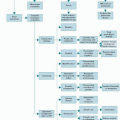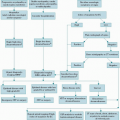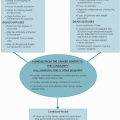collagen and glandular degeneration and epithelial dysplasia, atrophy, and localized or diffuse mucosal ulceration. Nonkeratinized mucosal areas are most affected, including the labial, buccal, and soft palate mucosa; the floor of the mouth; and the ventral surface of the tongue. The loss of basement membrane epithelial cells exposes the underlying connective, innervated tissue stroma, which contributes to more severe oropharyngeal pain.
TABLE 19.1 Cancer treatment- and patient-related risk factors for oral mucositis | |||||||||||||||||||||||||||
|---|---|---|---|---|---|---|---|---|---|---|---|---|---|---|---|---|---|---|---|---|---|---|---|---|---|---|---|
|
than on direct irradiation of the teeth. Teeth in the irradiated field may be desensitized, leading to asymptomatic early caries. Therefore, daily fluoride application is necessary. Health care costs associated with oral mucositis in head and neck cancer patients are significant (19,20). In a prospective, longitudinal, multicenter study with 75 patients with head and neck cancer receiving RT with or without CT (20), 76% reported severe mouth and throat pain necessitating an increased number of visits to health care providers, 51% needed a feeding tube, and 37% were hospitalized with a mean stay of 4.9 days. These complications are directly correlated with a significant increase in resource use and excess costs.
ulceration, and erythema, suggesting its use as a potential biomarker of active oral cGVHD.
TABLE 19.2 Guidelines for the care of patients with oral mucositis | |||||||||||||||||||||||
|---|---|---|---|---|---|---|---|---|---|---|---|---|---|---|---|---|---|---|---|---|---|---|---|
|
prospective phase II study reported a potential benefit from EGF oral spray in the management of oral mucositis in patients undergoing RT for head and neck cancer. In this study, 113 subjects were randomized into one of four arms: EGF treatment groups (10-, 50-, and 100-µg/mL doses twice) and placebo. The 50-µg/mL dose was the most efficacious for the treatment of oral mucositis (50). Further randomized controlled trials are needed to confirm these results.
Stay updated, free articles. Join our Telegram channel

Full access? Get Clinical Tree







